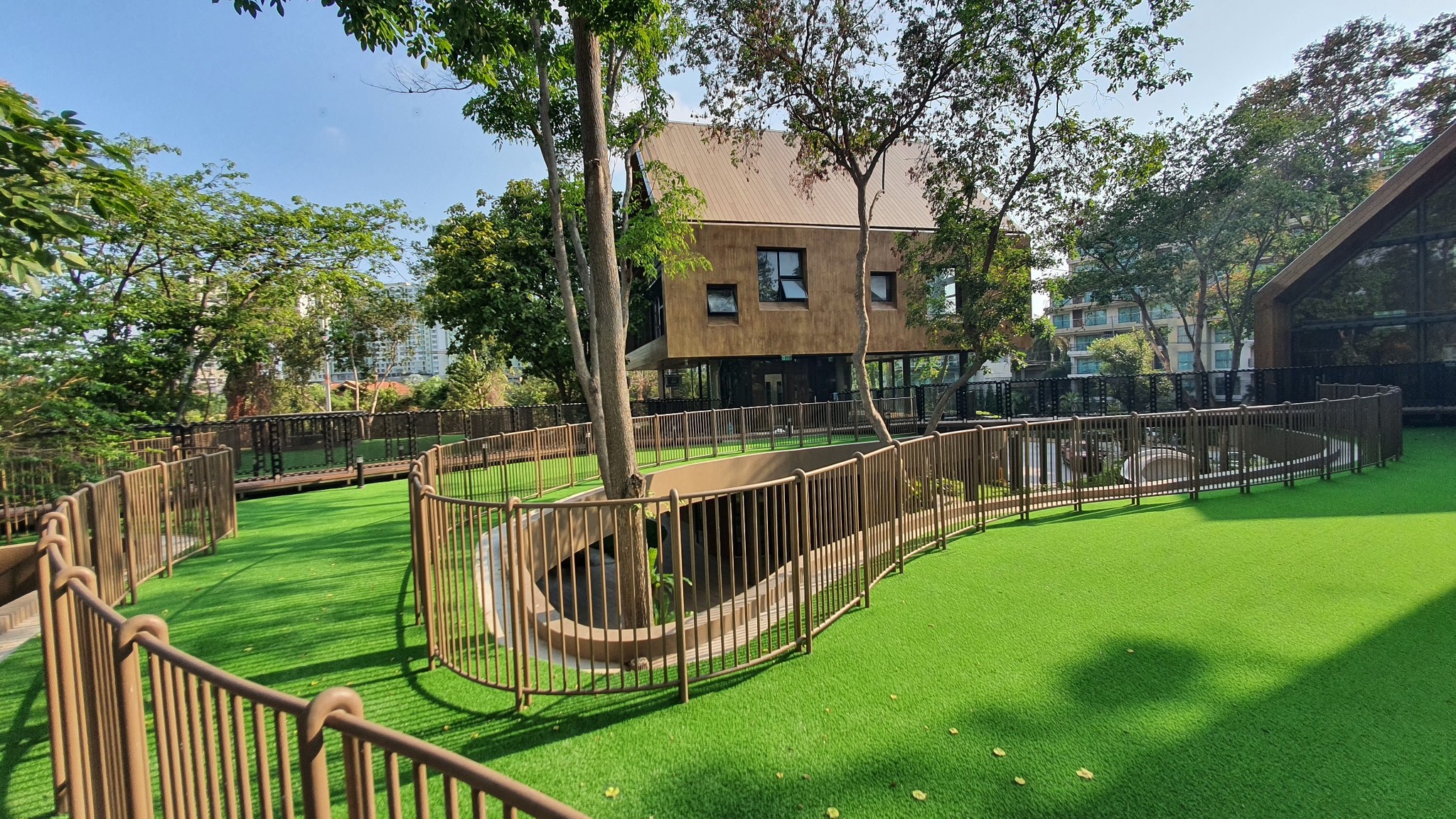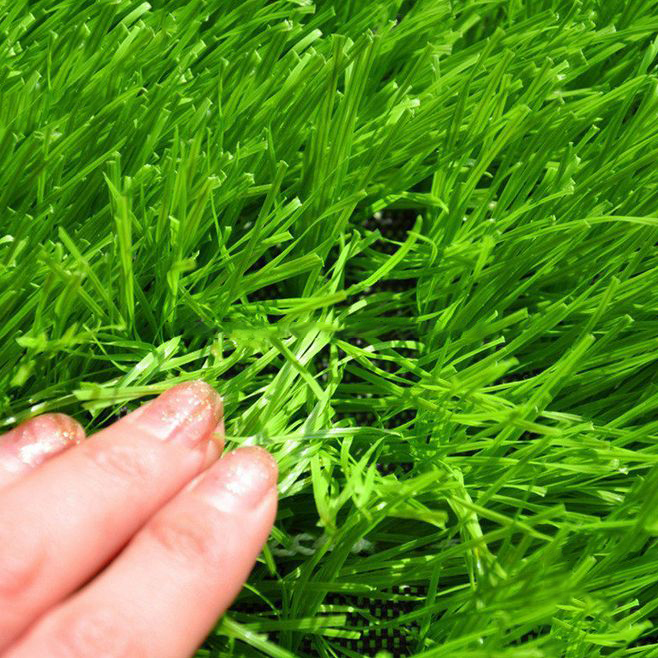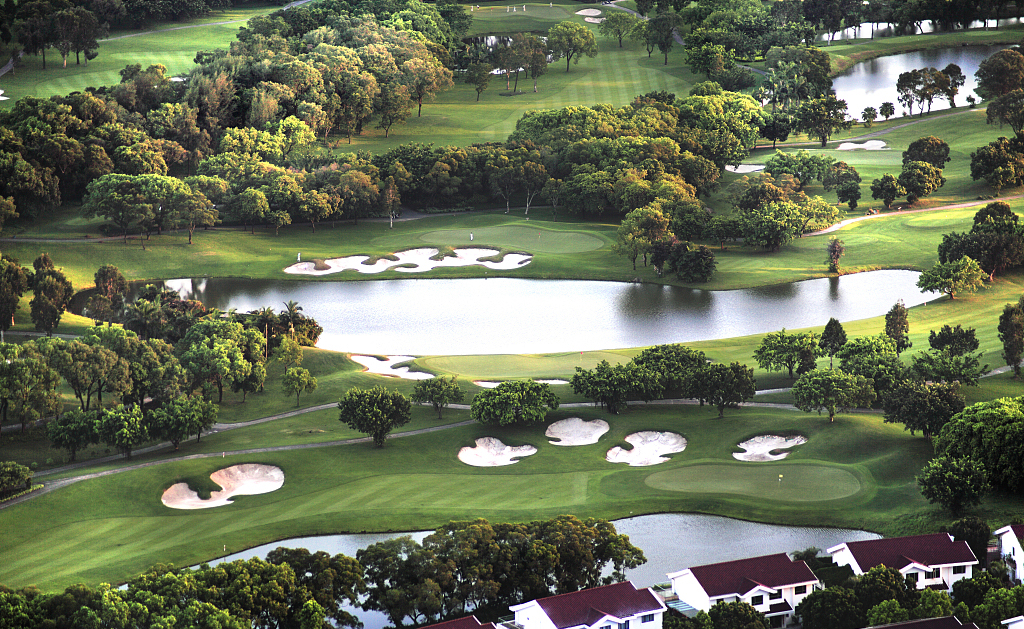
Considering how to decorate outdoor landscape with artificial grass? This comprehensive buyer’s guide is your roadmap to navigating the diverse realm of artificial landscaping grass, helping you make informed decisions that lead to a stunning and low-maintenance outdoor space.
It is no secret that artificial grass has witnessed a remarkable rise in popularity in recent years. As homeowners and businesses seek low-maintenance and environmentally friendly landscaping solutions, synthetic turf has emerged as an attractive option.From reduced maintenance to water conservation and year-round greenery, it has become a preferred ground cover for many.
There are different types of turf made for specific uses and applications. Here’s a step-by-step guide on choosing the right artificial grass for your space.
1)Determine your requirements for Artificial Grass
Before you start exploring different types of artificial grass, take some time to assess your requirements. Consider factors such as the purpose of the grass (e.g., landscaping, sports, or pet-friendly), the level of foot traffic it will endure, and the climate conditions in your area. Understanding these key factors will help you narrow down your options and find a grass that suits your needs.
2)Select the dtax,pile height and density of artificial grass
Dtex is the count grading for filament and spinning yarns recognized by all international bodies in the man-made fibers industry.The pile height refers to the length of the grass blades, and the density refers to the number of blades per square inch. These three factors determine the look and feel of the artificial grass. Opt for a pile height between 10 to 60 mm for a natural appearance. A denser grass will feel more luxurious underfoot and appear more realistic.


3) Check the weight
Good quality artificial grass should be weighty, with a weight of 2-3kg per metre square. The weight is particularly important if you’re installing it yourself, as you will have to lift and move the roll around.
4) Choose the good look color grass
Choose a shade that complements your surroundings and achieves the desired aesthetic.Consider variations in color to mimic natural grass, but whether that’s a light or a dark green is up to you and what looks natural in your garden. We’d recommend ordering samples and going out into your garden at different times of the day to see how the sunlight makes it look. Make sure that the pile is facing the house or the main viewing point. This is how your lawn will be placed and it makes a difference to the way your lawn will look.
5) Backing Material:
The material beneath the turf blades, providing strength and stability is the backing, which has two parts: primary backing and secondary backing. Both the primary and secondary backings work together to provide dimensional stability to the entire system.The primary backing is typically comprised of woven polypropylene fabrics that allow the artificial grass fibers to be tufted into the material in rows. In other words, it’s the durable material that the grass blades/fibers are stitched to.The secondary backing is often referred to as the ‘coating’ on the back of the turf. This coating gives synthetic turf its all-weather durability and most of its tuft bind. Without the secondary backing, most synthetic turf would not last very long under normal usage.

6)UV Resistance:
You want a turf that will not melt when exposed to high temperatures and will retain its original shape. You also don’t want its color to easily fade with constant sun exposure. All of our products at Sdong Grass have been professionally UV tested. If you decide to buy elsewhere, make sure it has been tested as well!
7)Good warranty:
Check the warranty offered by the manufacturer. A longer warranty period indicates confidence in the product’s durability.One of the significant advantages of artificial grass is its low-maintenance nature. However, different grass varieties may require varying levels of upkeep. For example, some grasses might need occasional brushing to maintain their upright position, while others may require infill material to keep the blades in place. Therefore, consider your willingness and ability to maintain the grass before deciding.
8)Request samples and compare:
Request samples from your supplier to get a better idea of how the artificial grass will look and feel. This will allow you to compare different options and assess their suitability for your project. Pay attention to color variations, blade texture, and overall aesthetics to ensure you make an informed decision.
9)Budget Considerations :
Set a budget and explore options that meet both your aesthetic and financial requirements.


By considering these factors, you can choose artificial landscaping grass that not only suits your preferences but also meets the practical requirements of your specific environment. Artificial grass can provide a green and visually appealing landscape without the maintenance demands of natural grass, making it a durable and convenient choice for various outdoor spaces.


